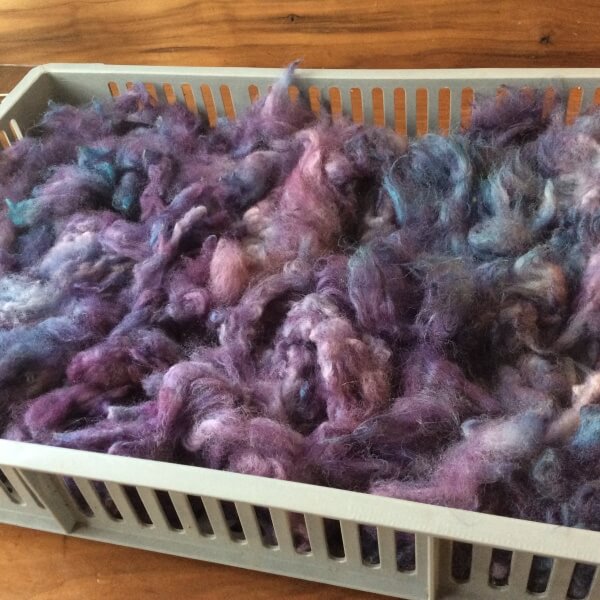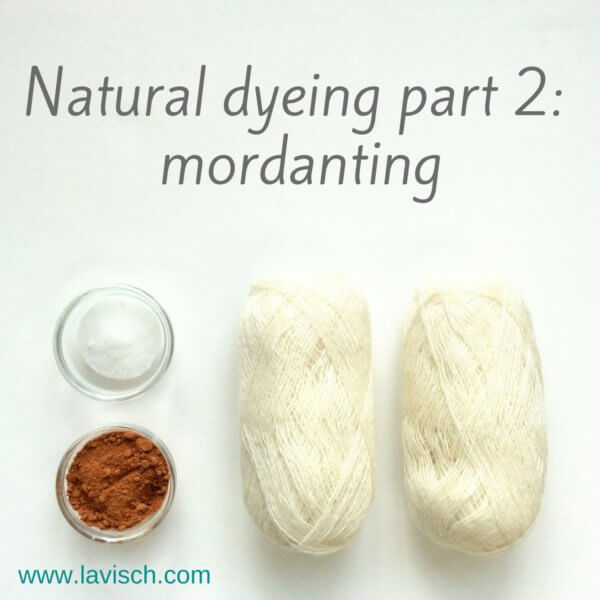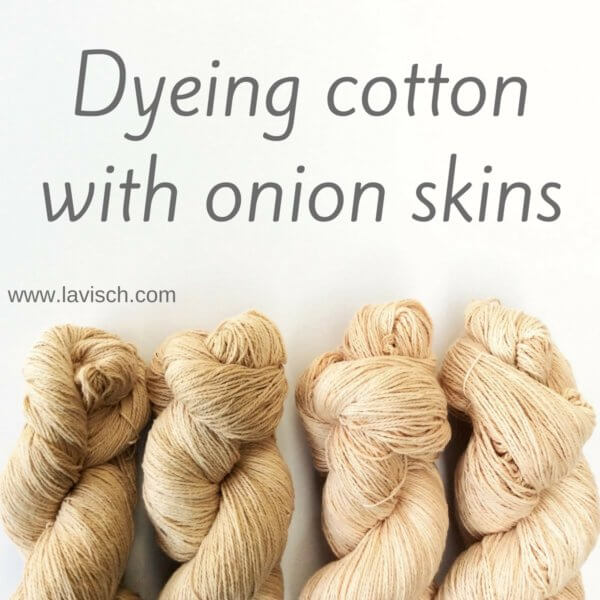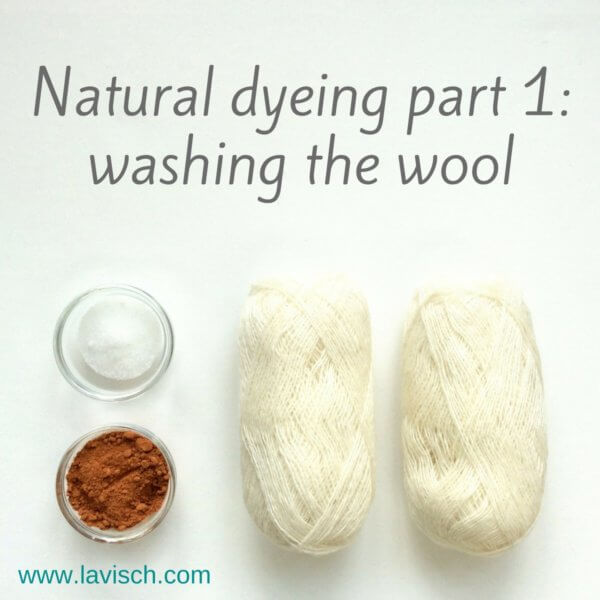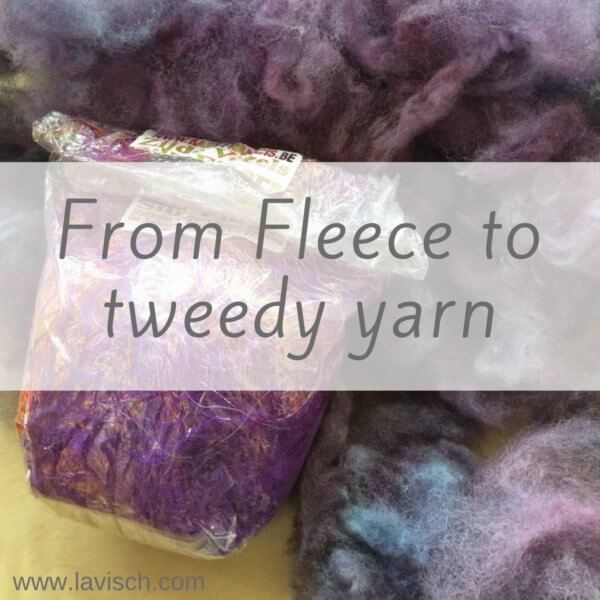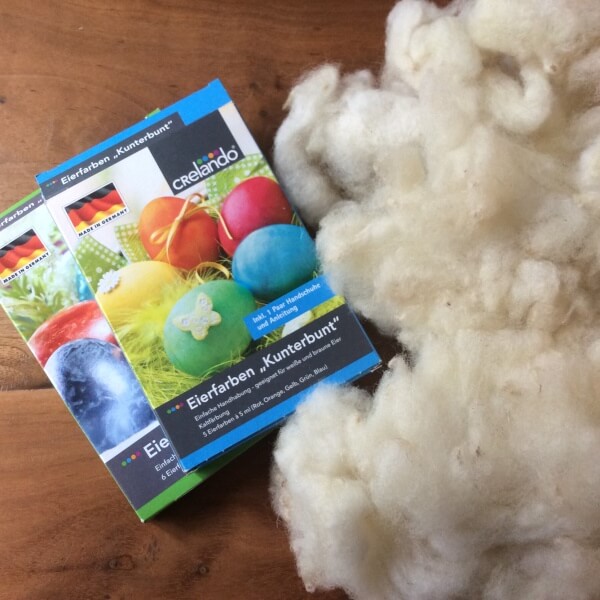
Being a spinner, I not only have lots of lovely top and roving in my fiber stash, but also quite a few whole fleeces. A whole sheep worth of wool can get a bit boring color-wise. So, now with Easter all done, it is time to put that leftover Easter egg dye to good use and start dyeing wool!
Easter egg dye and other food coloring are perfectly suited to dye protein-based fibers and yarns. Wool, alpaca, and silk are lovely to dye yourself. These dyes, however, can’t be used to permanently dye acrylics and plant-based fibers like cotton.
Supplies needed
- Wool or yarn: I’m using some lovely Lleyn wool, that I already scoured last year. If dyeing or over-dyeing yarn, make sure to skein the yarn if you have it in a ball put-up. Remember to tie the skein with some pieces of cotton or acrylic to make sure your wool won’t tangle beyond rescue.
- Easter egg dye or other food colorings
- Vinegar to change pH value and improve the dye take up by the wool
- Non-aluminum pot and spoon
Let’s get started!
1. Fill the pot with hot water from the tap, add some glugs of vinegar (I know, very scientific this way) and put in the wool to pre-soak. Leave it like that for 10 to 15 minutes.
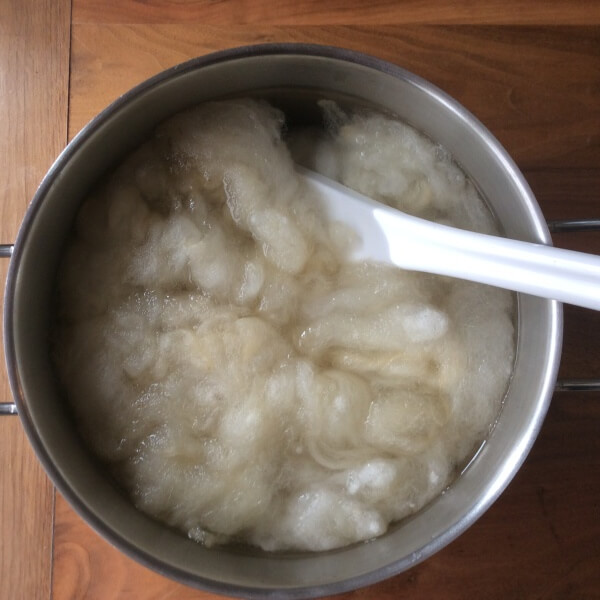
2. While waiting I made myself a cappuccino and pondered what colors to use. I decided to use red and blue to hopefully end up with purple.
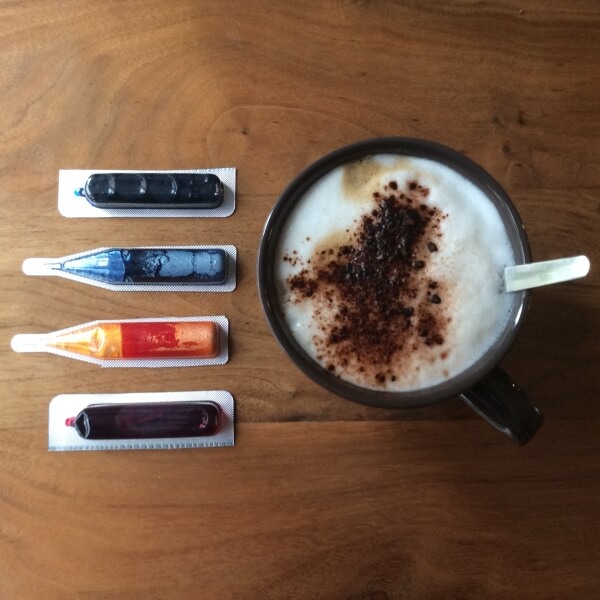
3. Added the dye to the pot and put it on the stove until the water had reached a slow simmer. Then I put the fire out and let it be. Do not let it come to a rolling boil and don’t stir a lot or vigorously, we don’t want to felt our wool!
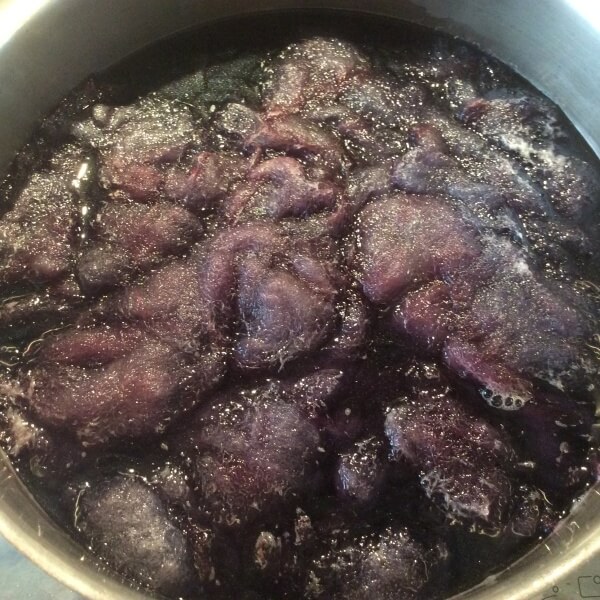
4. Checking the progress, you can see that the red dye has disappeared completely from the water. There is however still a lot of blue in the water and not in the wool.
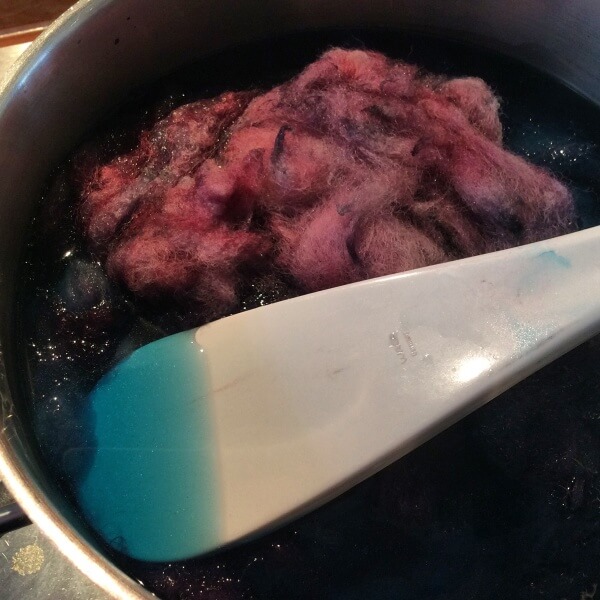
5. A couple of hours later I’m satisfied with how much dye has been taken up by the wool. Other colors may need less time. Now it is time for a rinse. I have filled the sink with hot water and gently swooshed the wool around int it, to rinse out any leftover dye. Only use cold water, if your wool is also completely cooled down. Rapid cool-down can also cause felting. Therefore I always use hot water for rinsing, just to be sure I don’t accidentally felt my wool.
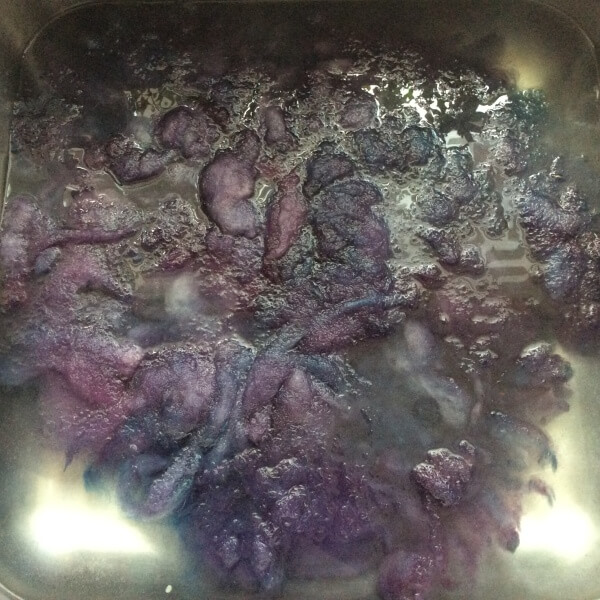
6. Then it is time to remove all the excess water from the wool. After a gentle squeeze, I use my dedicated salad spinner for this. You can, of course, also use a stand-alone spin dryer. When using the one in your washing machine, make sure it does not automatically involve rinsing as well, because that may again cause felting.
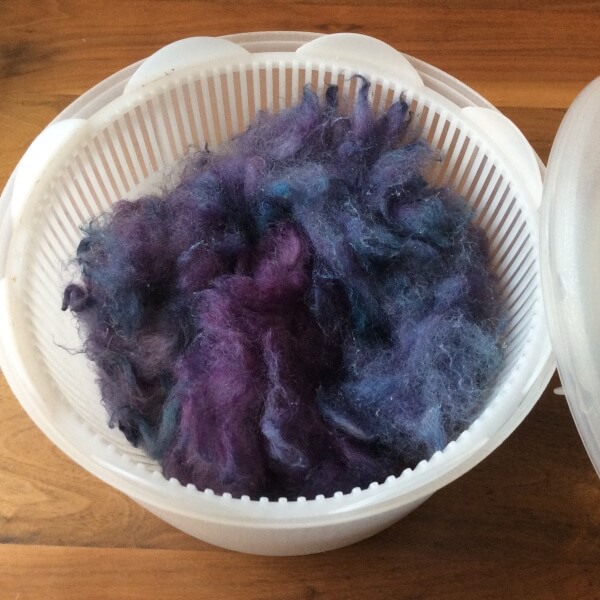
And there you have it: a nice crate full of purple wool! Dyeing wool is pretty fun, isn’t it? When completely dry I had even more fun carding the wool into batts for spinning, read all about it here.
